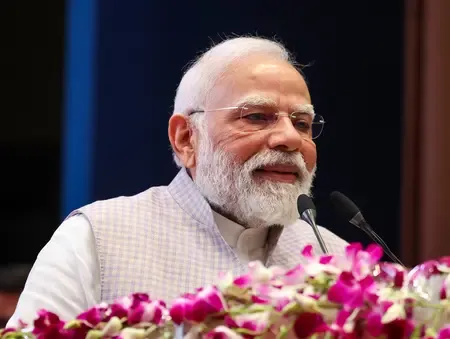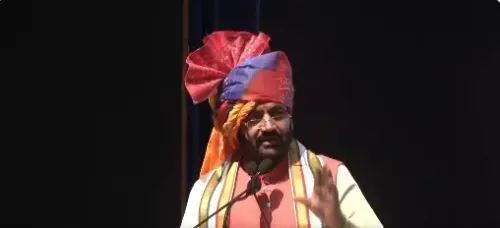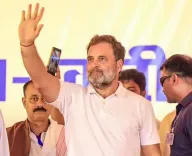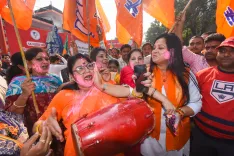What Factors Contributed to the Downfall of Congress and the Rise of BJP in Bihar Elections?

Synopsis
Key Takeaways
- BJP's rise in Bihar reflects a significant shift in voter sentiment.
- The decline of Congress highlights challenges faced by national parties in regional contexts.
- The impact of female voters is becoming increasingly influential in electoral outcomes.
- Historical voting trends show a long-standing battle for political dominance in the state.
- The 2025 elections mark a pivotal moment in Bihar's political landscape.
Patna, Nov 14 (NationPress) Bihar, a state known for its large population and dynamic political scene, has delivered a resounding verdict on its governance, decisively ruling out the likelihood of a hung assembly as some analysts had speculated, largely due to two decades of anti-incumbency against the Nitish government.
The 2025 mandate stands as the most significant and convincing endorsement for the Nitish Kumar-led NDA regime.
This election also signals a significant defeat for the alliance comprising Rashtriya Janata Dal (RJD) and Congress, according to result trends observed until noon.
One of the standout features of the 2025 elections is the record performance by the BJP-JD(U) coalition, with both parties achieving a strike rate exceeding 80-90 percent, based on current trends.
However, the increase in their support and public backing did not happen spontaneously; it is a narrative of gradual growth and consolidation in the Hindi heartland since Independence.
Historical analysis reveals that the once-mighty Congress party, which held 239 seats in the 1952 elections, has now dwindled to a mere single-digit representation in this election, underscoring a sharp decline attributed to weak and unstable leadership.
In the inaugural elections of 1952, Congress captured 41.38 percent of the vote share, but this has now plummeted to below 10 percent.
During the 2020 elections, it managed a meager nine percent of the votes.
The decline of Congress's voter base began in the 1980s, but the most significant drop occurred with the emergence of the Lalu Yadav era in Bihar.
In the 1990 elections, Congress faced a devastating defeat at the hands of the Janata Dal (JD), led by Lalu Yadav, marking its first fall to the second position.
The JD achieved a vote share of 25.61 percent while Congress settled for 24.78 percent.
The following severe decline occurred with the rise of Nitish Kumar's JD(U).
In 2000, its vote share fell to just 11 percent and 23 seats, and in the 2005 Assembly elections, when Nitish Kumar assumed the role of Chief Minister, Congress reached a low of five percent vote share and 10 seats.
The situation worsened in 2010 when it could only secure four seats with an eight percent vote share.
The grand old party, once a formidable force in the Hindi heartland, began to fade with the rise of regional leaders like RJD and JD(U), and today it finds itself at a crossroads, facing significant challenges to rejuvenate its presence.
Conversely, the BJP, which embarked on its electoral journey in Bihar with an eight percent vote share and 21 seats in 1980, has witnessed a consistent upward trajectory over the years, establishing Bihar as one of its strongholds.
BJP's vote share steadily climbed from 1980 to 2010, experiencing a remarkable surge post-2014 when Prime Minister Narendra Modi came to the forefront.
The party's vote share increased by eight percent and has remained robust since.
The 2025 elections recorded the highest voter turnout in Bihar at 67.13 percent, with a notable increase of nine percent in female voters compared to their male counterparts.
Both Nitish Kumar and PM Modi have cultivated a women-centric 'constituency' through their policies, which has likely contributed to this increase in female voter turnout.
This election thus represents a pivotal moment for Bihar, highlighted by the largest voter turnout since Independence and a resounding endorsement for the ruling government, despite two decades in power.
The only other occasion when Bihar experienced a distinctly different voting trend was in 1977 when 'Jan Nayak' Karpoori Thakur-led JP achieved a commanding mandate with 42.68 percent of the votes, significantly diminishing Congress's presence to just 57 seats.









